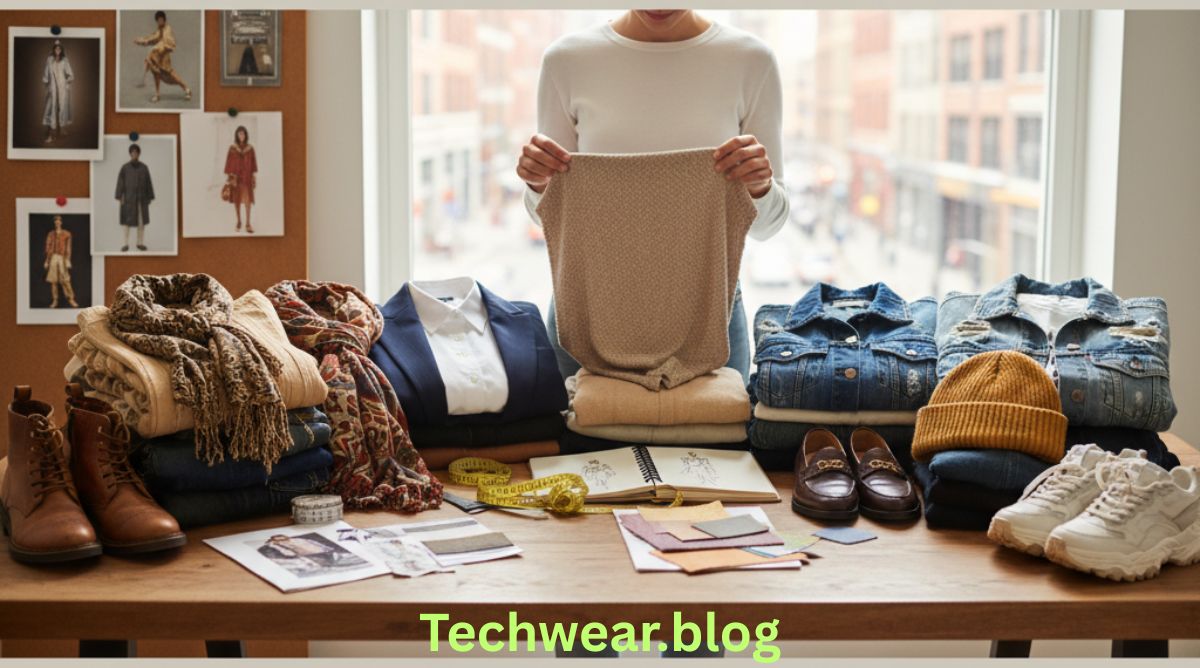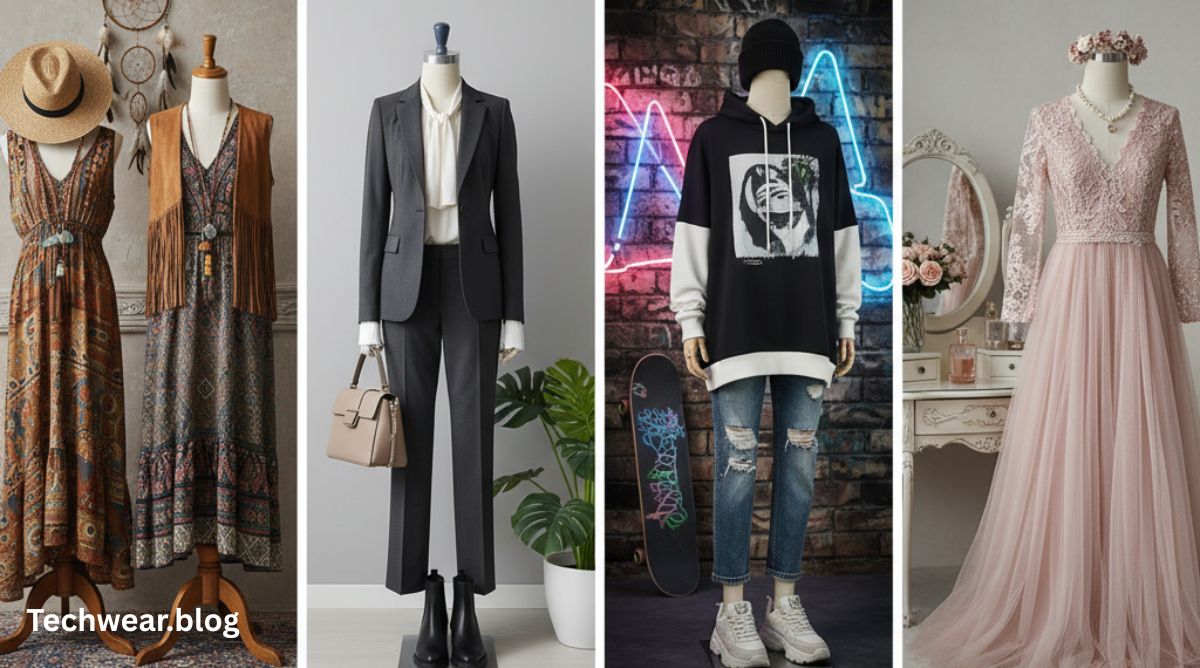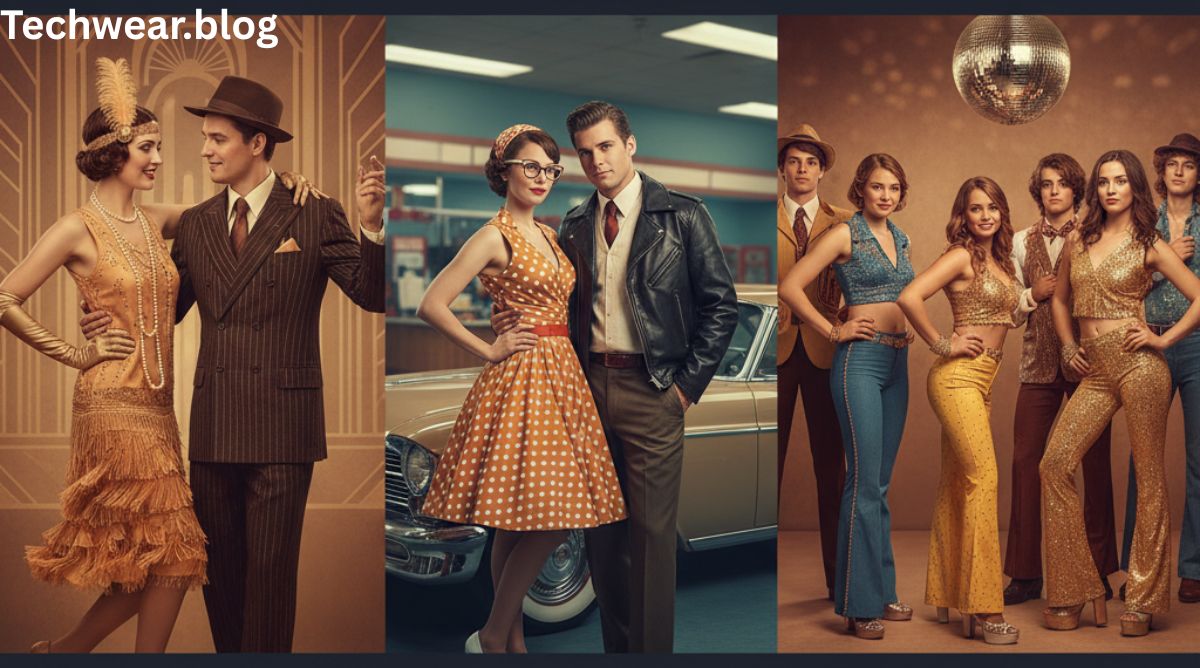Finding your style of clothing is not just about following fashion trends—it’s about expressing who you are through what you wear. Your clothing reflects your personality, mood, and values. Whether you’re a minimalist who loves clean lines, a bohemian who enjoys flowy patterns, or someone who experiments with streetwear, discovering your style helps you dress with confidence and purpose.
Before we begin, you can learn more about the broader concept of fashion on Wikipedia.
Understanding the Meaning of Personal Style
Your personal style is the unique way you express yourself through your clothes, accessories, and grooming. It’s a combination of your personality, lifestyle, and aesthetic preferences.
When people think about how to find your style of clothing, they often imagine it’s about copying what’s popular. But true style is about authenticity. It’s about knowing what makes you feel comfortable, confident, and like yourself.
Some people naturally develop their style through experimentation; others find it by observing what resonates with them. The key is to recognize patterns in what you like—and wear them proudly.
Step 1: Assess Your Current Wardrobe
Before exploring new styles, start by evaluating what you already have. Open your wardrobe and look at every piece critically.
Ask yourself:
- Which clothes do I wear most often?
- What outfits make me feel confident?
- Are there items I never reach for? Why?
Separate your clothes into three piles: love, maybe, and don’t wear. The clothes you love will help you identify your preferred colors, fabrics, and silhouettes. Those you don’t wear might indicate styles that don’t suit your body type or lifestyle.
This process gives you a clearer idea of what to keep and what direction to explore next.
Step 2: Identify Your Body Shape
One of the most important aspects of how to find your style of clothing is understanding your body type. The right fit enhances your best features and makes you feel more confident.
Common Body Shapes
- Hourglass: Curved figure with a defined waist. Opt for fitted clothes that highlight your shape, such as wrap dresses and tailored tops.
- Pear: Wider hips than shoulders. Balance proportions with structured jackets and A-line skirts.
- Apple: Fuller upper body and waist. Choose flowy tops, empire waist dresses, and V-necks.
- Rectangle: Straight silhouette. Add definition with belts, layered outfits, and flared bottoms.
- Inverted Triangle: Broad shoulders with narrow hips. Try V-necklines, soft fabrics, and wide-leg pants.
By dressing according to your shape, your clothes will feel more flattering and comfortable.
Step 3: Define Your Lifestyle Needs
Fashion should fit your daily life. Think about where you spend most of your time and what your clothing needs are.
For example:
- Professionals: May prefer classic or minimalist styles featuring blazers, trousers, and solid colors.
- Students: Often gravitate toward casual or streetwear looks—jeans, sneakers, and hoodies.
- Creatives: Might enjoy bohemian or eclectic styles that allow freedom of expression.
- Athletic or active individuals: Often prefer sporty or athleisure wear for flexibility and comfort.
When your clothing aligns with your lifestyle, you’ll not only look stylish but also feel natural in your daily routine.
Step 4: Find Inspiration
Inspiration is everywhere—on social media, magazines, movies, and even people you see on the street. When learning how to find your style of clothing, collect references that speak to you.
You can create a style mood board on Pinterest or save outfit photos that catch your eye. Over time, patterns will emerge—maybe you love neutral colors, oversized fits, or elegant tailoring.
You can also take cues from style icons:
- Classic: Audrey Hepburn, Meghan Markle, David Beckham
- Streetwear: Billie Eilish, Travis Scott, Hailey Bieber
- Bohemian: Florence Welch, Vanessa Hudgens
- Minimalist: Steve Jobs, Victoria Beckham
- Vintage: Harry Styles, Dita Von Teese
The goal isn’t to copy them exactly—it’s to identify elements that inspire you and reinterpret them in your own way.
Step 5: Experiment with Different Styles
Fashion is a process of trial and error. You won’t know what works for you until you try. Visit stores, thrift shops, or online boutiques to experiment with new cuts and colors.
Try on outfits outside your comfort zone—a flowy dress, a leather jacket, or bold prints. Take photos and see how they make you feel. Sometimes, you’ll discover unexpected combinations that define your unique style.
Remember, style evolves. What you love now might change in a few years, and that’s completely fine.
Step 6: Understand Color and Texture
Colors and textures are the soul of fashion. The right color palette enhances your natural features, while textures add depth to your outfit.
Finding Your Ideal Colors
Your skin undertone plays a big role in choosing the right shades.
- Warm undertones: Look great in earthy colors like beige, olive, mustard, and coral.
- Cool undertones: Shine in jewel tones like sapphire, emerald, and icy blue.
- Neutral undertones: Can wear both warm and cool hues easily.
Mixing Textures
Combine fabrics for a balanced look—pair soft materials like silk or cotton with structured ones like denim or leather. Textures bring dimension and sophistication to even the simplest outfits.
Step 7: Build a Capsule Wardrobe
Once you know what you like, start building a capsule wardrobe—a curated collection of versatile clothing pieces that you can mix and match effortlessly.
A typical capsule wardrobe includes:
- A well-fitted pair of jeans
- A white button-down shirt
- A neutral sweater
- A classic blazer
- A versatile dress
- Black trousers
- Basic T-shirts
- Comfortable sneakers and one pair of dress shoes
Having these essentials helps you create countless outfits without cluttering your closet. You can then add statement pieces that express your personality.
Step 8: Balance Trends with Timelessness
It’s easy to get caught up in trends, but true style is timeless. Instead of chasing every fashion fad, pick trends that fit your personality and complement your existing wardrobe.
For example, if cargo pants are trending and you love practicality, include a pair in neutral shades. If you’re drawn to bright patterns but prefer minimalism, try printed accessories instead.
Balancing timeless basics with occasional trendy pieces keeps your style fresh but authentic.
Step 9: Confidence—The Key to Great Style
The most important element in how to find your style of clothing is confidence. Clothes can transform how you feel about yourself, but it’s your self-assurance that truly completes the look.
When you feel good in an outfit, it shows in your posture and attitude. Don’t worry about others’ opinions—your style is your personal story told through fabric and color.
Confidence allows you to experiment, take risks, and own your appearance unapologetically.
Step 10: Keep Evolving
Fashion is constantly changing, and so are you. Your style will evolve as your experiences, environment, and preferences change. Embrace this growth—it keeps your wardrobe dynamic and exciting.
Revisit your wardrobe every few months to refine it. Donate or repurpose items that no longer align with your aesthetic. Continue exploring new inspirations to keep your fashion journey alive.
Conclusion
Learning how to find your style of clothing is not a one-time task—it’s a journey of self-expression and discovery. By understanding your body type, lifestyle, and preferences, you can build a wardrobe that reflects who you are and makes dressing up enjoyable every day.
Remember:
- Start with your current wardrobe.
- Know your body shape and color palette.
- Experiment fearlessly.
- Build a timeless base and add unique pieces.
- Above all, wear everything with confidence.
Fashion isn’t about perfection—it’s about authenticity. When you wear clothes that make you feel empowered, you naturally stand out. Style, after all, is not just what you wear—it’s how you live.
Wikipedia Source: Fashion – Wikipedia










